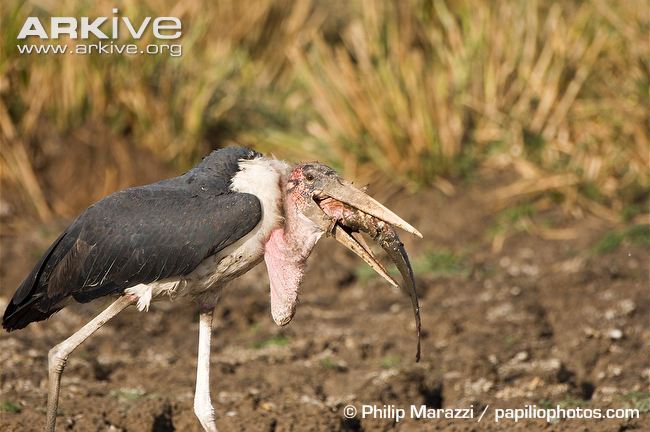
Leptoptilos crumeniferus
SUBFAMILY
Tribe Leptoptilini
TAXONOMY
Ciconia crumenifera Lesson, 1831. Monotypic.
OTHER COMMON NAMES
English: Marabou stork; French: Marabout d’Afrique; German:
Marabu; Spanish: Marabъ Africano.
PHYSICAL CHARACTERISTICS
Length 3.3–5 ft (115–152 cm), wingspan 7.4–9.4 ft (225–287
cm); 8.8–19.6 lb (4–8.9 kg). Black and white, with featherless
pink neck spotted black, and heavy greenish yellow bill.
DISTRIBUTION
Tropical Africa south of the Sahara.
HABITAT
Arid or semiarid open country within flying distance of rivers
and lakes.
BEHAVIOR
Fairly social, colonial during breeding season. Feeds in flocks,
often with other species such as vultures. Voice a variety of
whistles, clatters bill as display prior to mating.
FEEDING ECOLOGY AND DIET
Wide variety of animals including fish, reptiles, amphibians,
and invertebrates; also carrion.
REPRODUCTIVE BIOLOGY
Long breeding period, starting in the dry season through subsequent
rains. Nest in trees, woven from sticks and lined with
softer plant material. Clutch size two to three eggs, incubation
29–31 days, fledging after 95 days.
CONSERVATION STATUS
Not globally threatened.
SIGNIFICANCE TO HUMANS
Scavenge on carrion from waste dumps and other areas around
human settlements.
 Animalia Life
Animalia Life